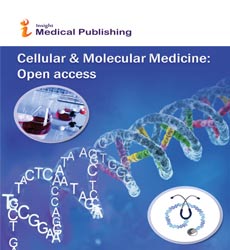Abstract
Molecular Detection of Clarithromycin Resistant Gene Mutations of Helicobacter pylori Isolated from Gastric Biopsies from Sudanese Patients in Khartoum State
The study aimed to detect clarithromycin resistant gene mutation of Helicobacter pylori isolated from gastric biopsies from Sudanese patients in Khartoum state using PCR and DNA sequencing technique. Two hundred eighty-eight specimens were collected from different hospitals by endoscopy. DNA was extracted using the guanidine method and PCR was done for the detection of bacteria using specific primers for 23s RNA and 16s RNA, allele specific PCR took place for detection of mutations then confirmed by DNA sequencing. One hundred and twenty-eight (44.4%) were females, and 160 (55.6%) were males. Sixty-six percent of patients were diagnosed clinically as gastritis, 10% as a gastric ulcer (G.ulcer), 9% as a duodenal ulcer (D.ulcer), 5% as esophagitis and 10% were normal patients. PCR detect 97/288 (33.7%) were H. pylori positive either by the presence of both 16s RNA & 23s RNA, or at least one of them. The study showed an association between the positivity of H. pylori by 16s and 23s RNA, both genes present together in 53 specimens and absent in 191 specimens. Also, there was a significant association between the presence of 23s RNA and endoscopic findings, 23s RNA present in 44 patients with gastritis, ten patients with D.ulcer, 2 patients with G.ulcer, 1 patient with esophagitis and 5 normal patients. Allele-specific PCR detect A2142G point mutation in 9/97 (9.3%). The DNA sequencing of 25 specimens confirms the presence of the above mutation in addition to 3 other mutations (A2143G, T2182C & C2195T). The point mutaion A2143G that detected by DNA sequencing didn’t appeare in allele specific PCR.
Author(s):
Aalaa Mahgoub Ali Abdalla
Abstract | Full-Text | PDF
Share this

Google scholar citation report
Citations : 187
Cellular & Molecular Medicine: Open access received 187 citations as per google scholar report
Abstracted/Indexed in
- Google Scholar
- China National Knowledge Infrastructure (CNKI)
- Cosmos IF
- Geneva Foundation for Medical Education and Research
- Secret Search Engine Labs
Open Access Journals
- Aquaculture & Veterinary Science
- Chemistry & Chemical Sciences
- Clinical Sciences
- Engineering
- General Science
- Genetics & Molecular Biology
- Health Care & Nursing
- Immunology & Microbiology
- Materials Science
- Mathematics & Physics
- Medical Sciences
- Neurology & Psychiatry
- Oncology & Cancer Science
- Pharmaceutical Sciences

